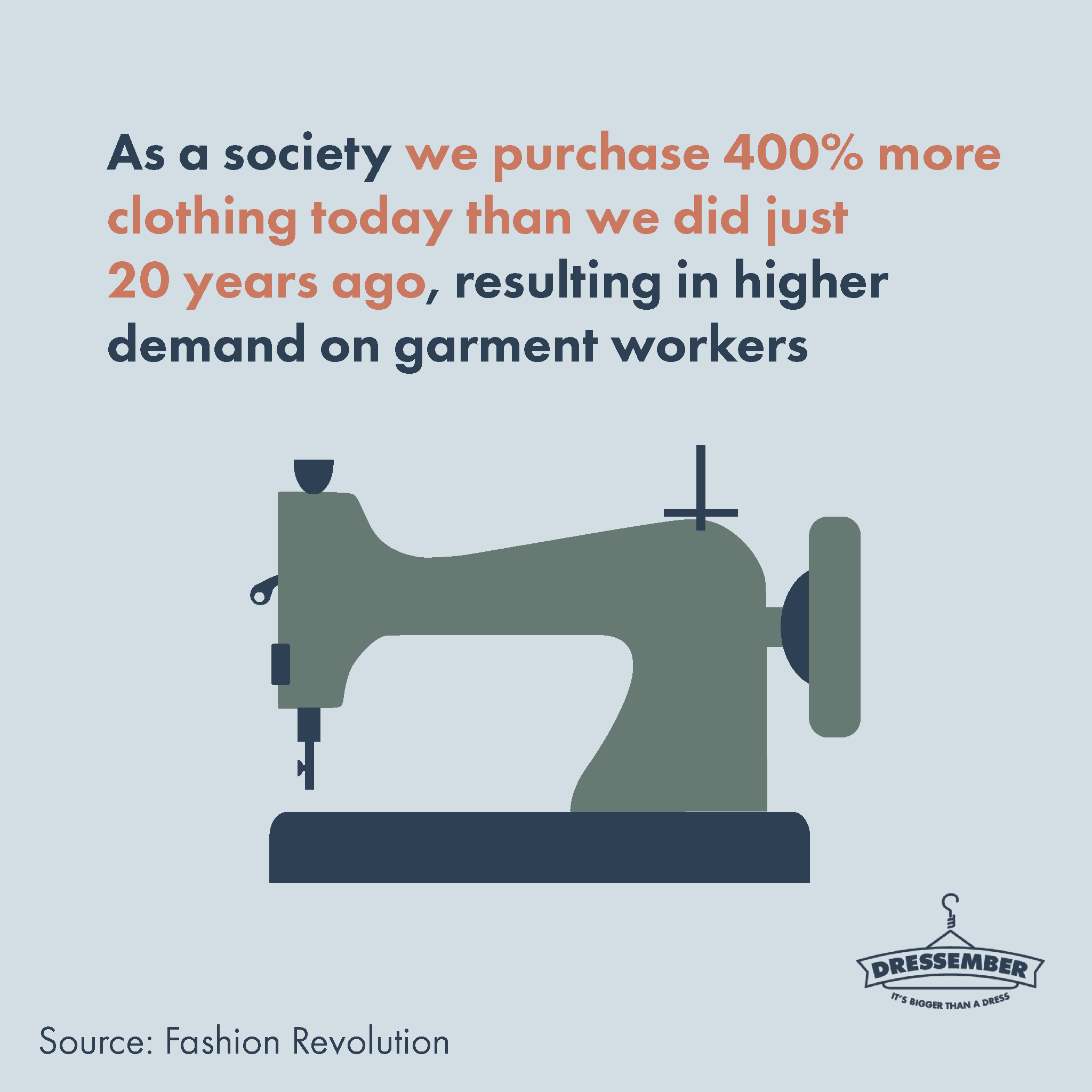How can we limit the demand for fast fashion?
Dressember Reading Day #25
Every day during the month of December, we’re answering common questions and breaking down different aspects of human trafficking on our blog and Instagram. Join us in raising awareness about the injustice of human trafficking by sharing, donating, or joining the Dressember campaign.
Whether we are conscious of it or not, we all use fashion as a form of self-expression. While this is not a new phenomenon, our buying habits have changed drastically over the past twenty years. Since 2000, we’ve purchased 60% more clothing items but owned the clothes for half the amount of time; 40% of our clothes go unworn. This increase in demand for production results in higher demand on garment workers.
Why is this happening?
Fast fashion.
Photo credit: The Guardian
What exactly is fast fashion?
There are a lot of definitions to describe fast fashion. All of them essentially boil down to describe the phenomenon as an accelerated cycle of design, production, and supply that brings fashion trends quickly and cheaply to customers. Instead of the traditional four seasons of trends, fast-fashion brands have at least 52 “micro-seasons” per year… i.e. they’re producing a new collection every week.
What does fast fashion have to do with human trafficking?
Excellent question! Last year, we published a piece about fast fashion and human trafficking. Essentially, the global fashion industry employs at least 60 million people and many of these workers are not receiving a fair wage, work in inadequate working conditions, and often experience physical and emotional abuse.
Oof, I read that post and got caught in a rabbit-hole of reading about fast fashion. It kind of seems overwhelming. How can I stop contributing to the demand for fast fashion?
Pay attention
Since you’re reading this, it sounds like you’re off to a good start. Pay attention to what kind of model your favorite brands are following. If they’re releasing new collections every week and the prices are really low, then they’re probably a fast-fashion brand.
Shift your buying (or non-buying) habits
Buy from brands that emphasize slow fashion or “circular fashion.” In “circular fashion,” textiles and materials are designed, produced, and used for the purpose of an endless system or loop. Invest in high quality and timeless pieces. If you can’t imagine at least #30wears or more, then you probably don’t need it. Instead, rent clothes or swap with friends!
Wear something that represents who you are regardless of the latest trends.
Embrace the broken. Embrace the wear and tear. Your clothes have a story and one little rip doesn’t mean it has to end.
If rips aren’t really your thing, repair it! And jazz it up while you’re at it!
Instead of throwing out clothes, give them a new purpose by DIYing. 95% of discarded clothing can be recycled or upcycled.
Check out this issue from Fanzine (a magazine by the Fashion Revolution). It’s filled with tips and guides!
Further Resources:
Want a short, but informative documentary? “Shirt on your back”
Big fan of podcasts? Fast Fashion- Affordable or Exploitative? or Wardrobe Crisis
This issue of Fanzine provides excellent information about the true cost of your clothing and how you can use your purchasing power.
Learn more: Fashion Revolution
About the Author
Madeline Van Husen first decided to be a part of Dressember while procrastinating physics homework her senior year of high school and the rest is herstory. When she isn’t too busy hosting hot chocolate parties, asking people the 36 questions, or avoiding the dreaded side-hug, you can find her curled up reading a good book, creating playlists on Spotify or drinking copious amounts of tea or frozen hot chocolate. Maddy is a senior at Boston College and wants to be like her mom when she grows up.



